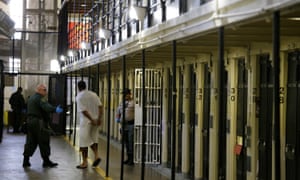Why California is dismantling its death row
After decades locked alone in small cages in California’s San Quentin prison, men sentenced to die are now being moved off death row. Sam Levin investigates
For decades, the notorious San Quentin prison in California has been home to some of the US’s most dangerous criminals, sentenced to die for their offences. But California has not had an execution since 2006. In March, the state’s governor, Gavin Newsom, announced he would be transforming San Quentin into a “rehabilitation centre” modelled after facilities in Norway, which have few restrictions and prioritise comfortable conditions and preparing people to come home.
Newsom, who halted executions in 2019, has pledged to close the housing units that make up death row, the largest in the country, to make way for the “pre-eminent restorative justice facility in the world”. As Sam Levin tells Hannah Moore, the 546 San Quentin residents on death row will continue to have death sentences but will be transferred to the general population of prisons across the state – which is likely to give them some basic amenities and small freedoms of movement they’ve been denied for decades.

The Guardian is editorially independent. And we want to keep our journalism open and accessible to all. But we increasingly need our readers to fund our work.
Support The Guardian